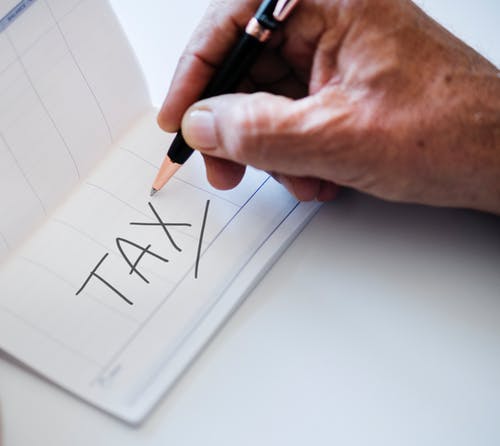The term “R&D Tax Credit” for Fresno business owners might conjure images of lab coats, high tech manufacturing lines, or in-depth computer research and cause them to think the credit couldn’t apply to them. This common misconception may be keeping some businesses from reaping thousands (or possibly even hundreds of thousands) of dollars in tax deductions. The credit is both easier to access and higher value than most would think.
What is the R&D Tax Credit?
The federal government (plus 36 individual states) created the program to incentivize private industry to be innovative and forward-thinking. It’s not industry-specific and is applicable to most types of research or improvements.
For Fresno and Central Valley businesses, this means farmers, packers, and growers are just as qualified as tech companies. In fact, many of our local businesses are constantly improving and on the cutting edge of their industries. If that sounds like you and your business, keep reading.
(Another big opportunity for Fresno: Qualified Opportunity Zones)
How can I qualify for the credit?
Before calculating the benefit, first, determine whether your innovation meets the qualifications. The R&D Tax Credit has what’s called the Four-Part Test. Meaning, if your innovation meets one or more of these criteria then it qualifies.
- Technological in nature: The product or research is the result of science or engineering
- Permitted purpose: It’s either a new invention or substantially improves something that already exists
- Technical uncertainty: Before embarking on the innovation, there was uncertainty about the potential success.
- Process of experimentation: Unlike following instructions in a methodical manner, the process of the innovation is experimental and follows a logical process of testing and evaluation.

Examples of Fresno Innovation that would qualify
- Modification of an existing manufacturing line to either accommodate a new product or improve efficiency
- Development or improvement of a hybrid crop
- Development or improvement of a product
- Development of a unique prototype used for manufacturing process
- Implementation or development of internally used software (ERP system)
- Custom computer coding that increases speed or customizes features
Note: the “substantially improves” factor from part two of the Four-Part Test can be met with very small fractions of time-saving. For example, imagine that custom coding to a computer program saves someone .5 seconds of manual entry. It easily meets the test if thousands or millions of entries multiply this time-saving.
The key is not to be shy when asking your tax advisor about the potential opportunity.
(You might also like our post: How To Calculate Estimated Tax Payments)
How much could I be saving?
The R&D Tax Credit is 6-9% of “Qualified Research Expenditures” or QRE. Essentially, there are two steps—calculating your own unique percentage then calculating the dollar amount. The calculation for determining the credit is complex—I’d highly recommend contracting an advisor who is familiar with it.
Once your advisor has calculated your unique percentage, it’s time to collect documentation/receipts for any activities that apply to this list:
Qualified Research Expenditures:
- Wages paid for qualified services
- Contract research expenses
- Product and process development
- Prototyping
- Tests and experimentation proving the research findings
- First implementation of findings post-testing
- Capital projects –design, development, and testing of equipment and/ or plant or plant processes.
- Manufacturing development and processes
Many activities don’t qualify, but the major ones are:
- Research in art, social science, and humanities
- Duplication or implementation
- Activities related to the innovation but done after it’s been commercialized (marketing, sales, etc.)
- Research contracts in which the researcher is liable if the experiment fails
- Any activity done outside the US
What if I’ve been innovative in past years, can I claim it?
Taxpayers can go back three years for federal and four years for California and claim the credit. The credit can be carried back only one year but can be carried forward up to 20 years. Important note: the credit can’t offset AMT tax. There is an additional benefit for small (startups) and new businesses in that the credit can offset payroll taxes. Any business under $5M in total revenue and less than 5 years old will qualify for this method.
R&D Tax Credit Case Study
ABC Farming is a fruit packer in Fresno. They have traditionally packed lemons but are diversifying to other citrus such as mandarins, limes and other lemon varieties. In order to accommodate these fruits, they must retrofit their current lines to handle the size variations. ABC Farming spends the following resources (QRE) on this initiative:
- Contracting equipment sales reps on options
- Hiring 5 additional staff to research, test, and plan
- Purchase of additional equipment
- Manufacturing of specialty line pieces
- Purchase of sample fruit to test the prototype
Let’s assume their Qualified Research Expenditures added up to $2M. Their estimated credit would be between $120,000 – $160,000.
Many businesses in Fresno likely qualify for this credit, yet are leaving money on the table. If you have questions about the process or are wondering if your innovation qualifies, call the office or email info@whhcpas.com
 By Juan Macias
By Juan Macias
Staff Accountant
Juan is a Senior tax accountant at WHH specializing in research and implementation of credits and complex taxation strategies. He’s our go-to resource when the firm is working on something new and innovative.






